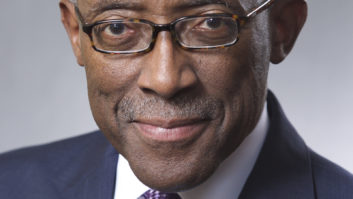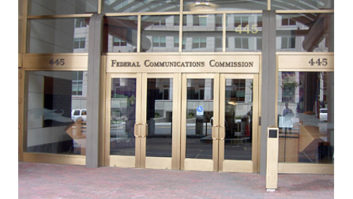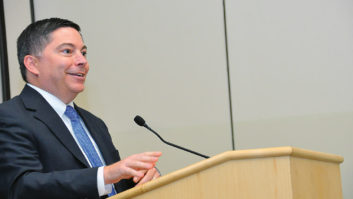
The author is an attorney with Fletcher, Heald & Hildreth, on whose blog this article originally appeared.
On Dec. 12, 2018, the Federal Communications Commission issued a Notice of Proposed Rulemaking commencing the 2018 Quadrennial Review of the commission’s media ownership rules.
The FCC is required under Section 202(h) of the Communications Act to review most of its broadcast ownership rules every four years to determine whether the rules continue to be in the public interest (and to repeal any rules that no longer serve the public interest) because they ensure a competitive broadcast marketplace. (Importantly, the national television ownership cap is excluded from the quadrennial review process).
These proceedings usually involve court challenges and typically take years to complete — as demonstrated by the fact that the commission did not complete the 2010 and 2014 quadrennial reviews until 2017.
In the NPRM, the commission is specifically reviewing its local radio and television ownership rules, as well as the “dual network” rule. The FCC is also considering the adoption of several diversity-related ownership proposals proffered by the Multicultural Media, Telecom and Internet Council.
Each of these items under the commission’s consideration are reviewed below. Despite its name, the NPRM does not in fact propose any specific rules, but rather requests comment broadly on any changes that should be made to these ownership rules. Instead, Chairman Ajit Pai requested an “intellectually honest conversation” about the current state of the media marketplace, and that any changes to the rules would “follow where the facts take us.”
LOCAL RADIO OWNERSHIP RULE
The Local Radio Ownership Rule limits both the total number of radio
stations an entity may own within a local market and the number of radio stations an entity may own in that market within the same service (AM or FM). Currently, the FCC divides markets into four tiers based on their size, allowing an entity to own more stations in larger markets. The rule currently permits entities to own up to five commercial radio stations in the smallest of markets (14 stations or less) — no more than three of which may be in the same service — and up to eight commercial radio stations in the largest of markets (45 stations or more) — no more than five of which may be in the same service.
The FCC requested comment on whether the Local Radio Ownership Rule should be eliminated, modified or remain the same in light of any changes to the broadcast marketplace. As in past quadrennial reviews, the commission seeks comment on whether it should modify or eliminate any, all, or none of: the relevant market definitions, market size tiers, numerical limits and AM/FM subcaps.
The commission also requested comment on the National Association of Broadcasters’ proposal that the commission relax its radio ownership limits due to increased competition for listeners and advertisers posed by other services including streaming services, satellite radio, podcasts, Facebook and YouTube.
Specifically, NAB proposes that entities in the top 75 Nielsen Audio Metro markets be permitted to own up to eight commercial FM stations and an unlimited number of AM stations. NAB proposes that all ownership limits on radio stations be eliminated in all other markets.
The FCC is also seeking comment on:
- whether the interim contour-overlap methodology should be made permanent;
- the issue of embedded market transactions;
- the impact that eliminating or modifying the rule would have on minority and female broadcast ownership; and
- whether the relevant markets should be defined as to encompass the increasing competition broadcasters face from satellite radio and online audio sources.
LOCAL TELEVISION OWNERSHIP RULE
The Local Television Ownership Rule limits the number of full-power television stations an entity may own within the same local market. The rule permits entities to own up to two television stations in the same market so long as no more than one of those stations is a “top-four” station within that market. As of last year, however, entities may request waiver of the “top-four” rule under certain circumstances.
The commission in the NPRM requested comment on whether changes in the television marketplace and the video programming distribution industry necessitate elimination, modification or retention of the current rule. Notably, in light of the evolving video marketplace, the FCC requested comment on whether:
- the local television market definition should be expanded to include non-broadcast sources of video programming such as multichannel video programming distributors and online video distributors; as well as social media platforms and Internet websites; and
- if the rule were to be maintained, the numerical limit and the “top-four” rule could be adjusted or eliminated to ensure continued competition in the television marketplace.
DUAL NETWORK RULE
The Dual Network Rule prohibits ownership of multiple television stations affiliated with two or more of the Big Four broadcast networks (ABC, CBS, Fox and NBC). A version of this rule, which effectively prohibits a merger between or among the Big Four Networks, has existed since the 1940s.
The commission requested comment on whether current competition in the television and advertising marketplace mandates the elimination, modification, or retention of this rule. Specific focus was placed on whether increased competition from OVDs necessitated changes to the rule given the commission’s previous findings regarding the promotion of broadcast localism.
MMTC PROPOSALS
The commission requested comment on MMTC’s three diversity-related proposed amendments to the media ownership rules:
- the extension of cable procurement requirements to broadcasters;
- the development of a model for market-based “diversity credits” to serve as an alternative to prescribed ownership limits; and
- the adoption of formulas creating media ownership limits that promote diversity.
Under the cable procurement requirement, cable systems must encourage minority and female entrepreneurs to conduct business with all aspects of a cable system’s operations. Cable systems may accomplish this obligation by recruiting qualified entrepreneurs from a pool of sources likely to representative of female and minority interests. Specifically, the FCC requested comment on whether the Communications Act permitted the adoption of such a rule for broadcasters, and if so, whether the rule would aid in increasing broadcast ownership diversity.
MMTC also proposed that the FCC should adopt a system of “diversity credits” which could be traded between broadcasters and “redeemed” by station buyers to offset increased ownership concentrations resulting from a station acquisition.
The proposal centers on the idea that a transaction deemed to promote diversity — for example the breakup of a local radio ownership cluster or the sale of station to a socially and economically disadvantaged business — could provide the seller with “diversity credits.” These credits could then be used by the seller to have a greater concentration of media ownership than otherwise permitted by the commission’s rules. Comment was sought on whether the Communications Act provided the FCC with authority to implement such a system, and if so, whether such a system would be feasible in increasing diversity in the broadcast industry.
MMTC’s third diversity-related proposal concerned the adoption of either a “Tipping Point Formula” or “Source Diversity Formula” to be used in establishing media ownership limits and promoting broadcast ownership diversity.
The Tipping Point Formula is a methodology for determining whether a transaction would result in the reduction of the amount of available revenue for supporting independent operators in a given radio market to an unsustainable level. If so, the transaction would be barred for having a negative impact on ownership diversity in that market. In contrast, the Source Diversity Formula is not limited to the radio service. The formula, however, relies on a complicated set of variables to assess whether a market manifests strong, moderate, or only slight diversity, which would then be used to assess the permissibility of a given transaction. The FCC requested comment on the feasibility of these proposals, and whether their adoption would aid in encouraging broadcast ownership diversity.
Comment deadlines had not yet been published at press time. File comments in MB Docket No. 18-349 at www.fcc.gov/ecfs/.







